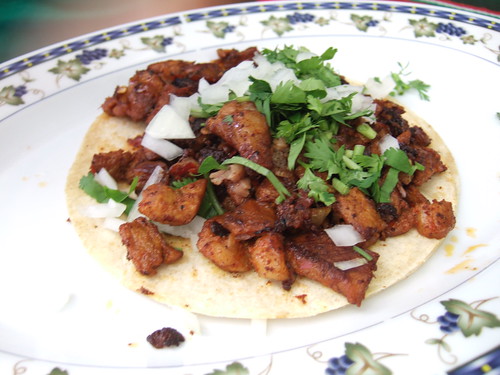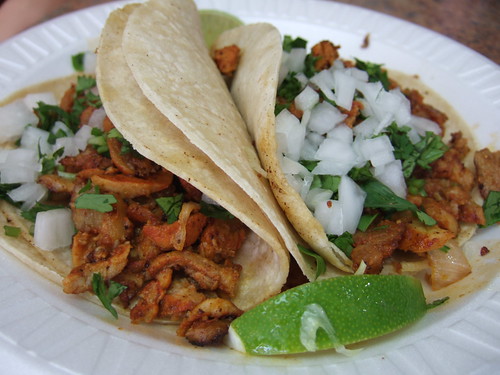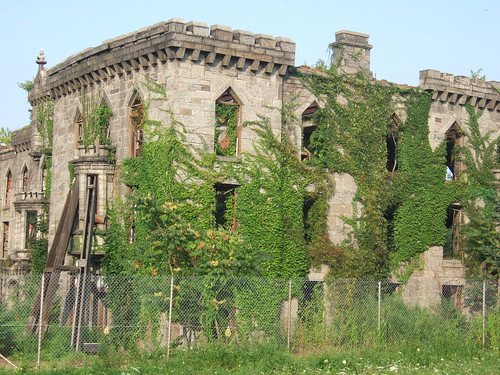For non-New Yorkers, here’s a quick lesson about my city. New York City is made up of five boroughs: The Bronx, Brooklyn, Queens, Manhattan and Staten Island. In my quest to eat more often outside of Manhattan, Staten Island is the least represented on this site. Although it has the most suburban feel in all of the five, it has been experiencing a large growth of Mexican immigrants in the last 12 years.

The Mexican community–documented and undocumented–have contributed to the diversity of Staten Island, especially on the north shore. Staten Island has historically been known as the “whitest” borough in New York City, but now, almost 2% of its entire population is composed of Mexicans. According to the 2000 Census, Mexicans were the second largest foreign-born group in Staten Island. Besides more affordable housing, the mighty Verrazano-Narrows Bridge helps connect the borough to Brooklyn, Long Island and New Jersey, so a lot of contractors seek out workers there to fill jobs.
I visited to seek out the best taco. I started this food project last year and it’s gotten hot enough outside to warrant a continuation of my search, so I enlisted Staten Island locals Sean and Jane, and of course, Cameron’s stomach, to help me find the best tacos in the neighborhood. I had a few stores in mind from a few Google searches, but we let them walk us to the neighborhoods where the Mexicans live and hang out to find the more authentic tacos. When available, we always bought the chorizo because it was the easiest to compare. I’ve had so many chorizo tacos in the last year and a half that I think I know a good one when I taste one. When the offal kinds were on the menu, though, I gravitated towards them since I didn’t have a lot of them the last three times I went around Manhattan.
My favorites were the longaniza and chorizo from La Conchita, the suadero from Tacos La Abuelita and the cabeza from Tulci-Mex.
Here’s the complete rundown:
1. Taqueria El Gallo Azteca, 75 Victory Blvd., 718/273.6404

We were famished when we arrived in Staten Island via the free ferry ride from downtown Manhattan. We walked past the Taco Bell and made our first stop in St. George. (Who is by the way, not a real saint, but someone who was treated like one because he bought all the land the community at the time needed.) Even though we knew we had to make room for a lot of tacos, we still ordered one apiece from El Gallo. With the semi-chewy bistek, the spicy and salty al pastor and two of the lengua, or tongue, we were off to a very good start.
2. El Campesino, 718/447.1215

The cecina taco was the best. Cecina is a traditional cut of beef in Mexico, sliced thin, salted, and then laid out to dry under the sun. It’s like their version of jerky, really. We also had the lengua, the overdone bistek and of course, the chorizo. Everything was deliciously salty which is why I love simply-prepared tacos–they bring out the Filipino in me.
3. La Mixteca Poblana, 104 Victory Blvd.

They only had the al pastor kind here which is skewered in a vertical rotisserie. Like any gyro store, it slowly spins while cooking. The meat is seasoned with adobo and sometimes pineapple or avocado. What I liked was their brown tomato sauce. It added a toastier taste to the tacos.
4. Tulci-Mex, 108 Victory Blvd., 718/720.1221

They had the most offal selection here, but no one spoke English so it was hard to get a translation. I ended up ordering the only ones familiar to me. The cabeza was a favorite, or the head, because the gelatinuous stuff melted in our mouths. We had the orejas, or the ears, which had some crunch to them. Oh, those little earlobe bones!
5. Las Jarochitos, Port Richmond, 718/876.9090

Finally, a barbacoa kind, or goat! Like any goat stew I’ve had, this one was stringy and gamey. Unfortunately, tiny sharp bones were included. They are really difficult to separate when you’re stewing a goat for several hours and everything falls apart. The cecina and the chorizo were included in our order but they took a while. Thank goodness for cold Coronas.
6. La Conchita, 244 Port Richmond, 718/448.0154

In the Philippines, we use longaniza and chorizo interchangably, but both were available here. We didn’t really care which was which because both were the best we’ve had all day even though at first look, all you can see was cilantro. They were crunchy and the tips were a little burnt, which made a lovely snack when Mexico scored a third goal against Paraguay.
7. Tacos La Abuelita, 229 Port Richmond, 718/273.4648

The tacos here were a dollar each but they had the “especiales” for $2 and $3. We didn’t ask what made them special but the dollar ones tasted good enough. We ordered the buche, or the stomach, the cueritos, or pork skin, and the suadero, which is like stewed beef with all the fat included. The buche was a little unnerving to some of us because it obviously looked like chopped up intestine. The pork skin wasn’t as cripsy as I would have liked, but the suadero reminded me of lechon paksiw without the sour taste.
The best part of this trip to Staten Island? Ralph’s ices after all those tacos!

Related post/s:
Background on finding the best taco in New York City project
The Community Resource Exchange’s report on Mexican Immigration in Staten Island

















